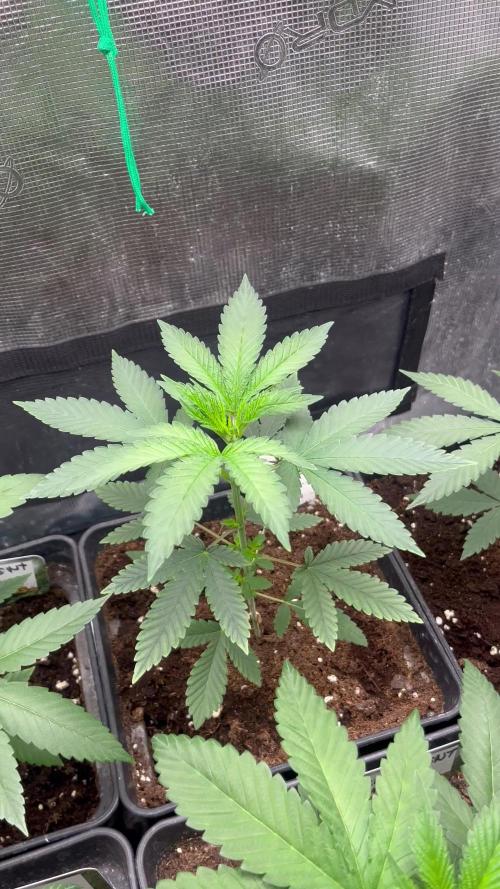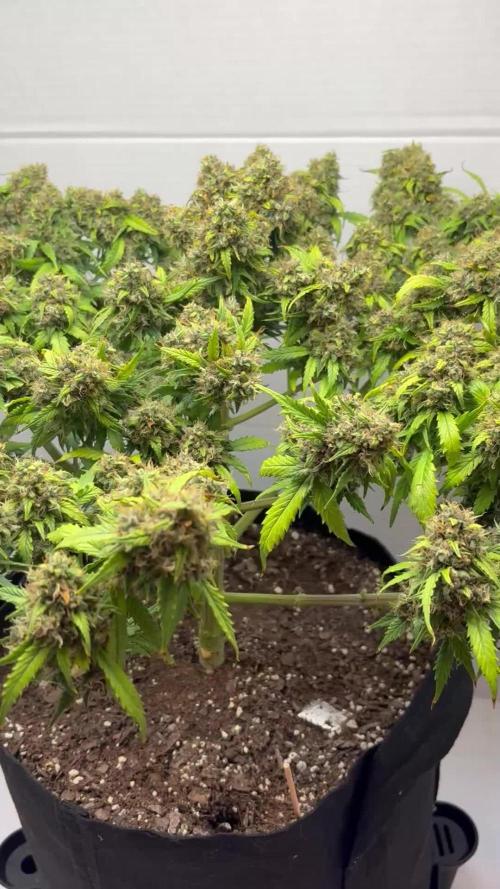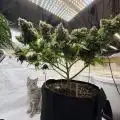The Grow Awards 2026 🏆 

































Likes
Comments
Share


@420DeepGrow
Follow
Gracias al equipo de MSNL y XpertNutrients sin ellos esto no sería posible.
💐🍁 Forbidden Fruit Auto:
Forbidden Fruit Autoflower, llamada así por sus deliciosos sabores, es un cruce entre Cherry Pie, Tangie y Siberian Ruderalis. Esta variedad ofrece efectos estimulantes y relajantes con un sabor afrutado, cítrico y a pino. Ideal para quienes buscan un dulce escape.
🚀🌻 Consigue aqui tus semillas:
💡TS-3000 + TS-1000: se usaran dos de las lámparas de la serie TS de Marshydro, para cubrir todas las necesidades de las plantas durante el ciclo de cultivo, uso las dos lámparas en floracion para llegar a toda la carpa de 1.50 x 1.50 x 1.80.
https://marshydro.eu/products/mars-hydro-ts-3000-led-grow-light/
🏠 : Marshydro 1.50 x 1.50 x 1.80, carpa 100% estanca con ventanas laterales para llegar a todos los lugares durante el grow
https://marshydro.eu/products/diy-150x150x200cm-grow-tent-kit
🌬️💨 Marshydro 6inch + filtro carbon para evitar olores indeseables.
https://marshydro.eu/products/ifresh-smart-6inch-filter-kits/
💻 Trolmaster Tent-X TCS-1 como controlador de luz, optimiza tu cultivo con la última tecnología del mercado, desde donde puedes controlar todos los parametros.
https://www.trolmaster.com/Products/Details/TCS-1
🍣🍦🌴 Xpert Nutrients es una empresa especializada en la producción y comercialización de fertilizantes líquidos y tierras, que garantizan excelentes cosechas y un crecimiento activo para sus plantas durante todas las fases de cultivo.
Consigue aqui tus Nutrientes:
https://xpertnutrients.com/es/shop/
📆 Semana 7:
Ha sido una semana algo complicada, tormentas, frio y lluvia han ralentizado el crecimiento, espero que pronto lleguen dias soleados, continuo con 1/3 nutrientes recomendados en cada riego.
Likes
9
Share


@Lennys_Laboratory
Follow
( IVE SWAPPED OUT RHIZ FOR REGENAROOT )
will flower when i have room :)
Feed Started With Tap Water Left Overnight For Chlorine/Chlorides To Evaporate.
Next Day.
Starting EC of our water is 0.15.
I added 1ML of Regenaroot Per Litre. Then Used Canna Terra Vega Until EC measured 0.7.
I then used the mighty growth enhancer drop by drop until my EC measured 1.1
Finally i PH'd the mix to 6.2. Made sure the feed was of adequate temp and continued to feed.
Likes
4
Share


@eldruida_lamota
Follow
Vamos familia, actualizamos la quinta semana de vida de estas Papayton de FastBuds.
La temperatura que estuvo entre los 24-26 grados y humedad dentro de los rangos correctos.
Todavía estamos en el ciclo 16 horas luz, 8 oscuridad, estiraron bien y ensancharon bastante también, el color es verde sano.
Se nota que los nutrientes de la marca Agrobeta hacen sus funciones.
También realicé una poda de bajos que yo si las veo necesarias para explotar después la flor.
- os dejo por aquí un CÓDIGO: Eldruida ,descuento para la tienda de MARS HYDRO.
https://www.mars-hydro.com
Hasta aquí todo, Buenos humos 💨💨💨
Likes
13
Share


@YOUNGSTERBR
Follow
Estava sem celular, perdi várias mídias da semana passada e dessa semana
Likes
7
Share


@Chronnoisseur
Follow
Growing strong,very bushy lt gives off a nice skunky smell already. I didnt think she was gonna do really well and than all of a sudden boom your thick and bushy
Likes
8
Share


@BossberryFarms
Follow
Harvest Week!!
WET WEIGHT
Plant C: 597g
Plant B: 605g
Plant D: 413g
I will update as soon as I harvest the last plant and get dry weights 😉
Processing
Likes
38
Share


@snowybudz
Follow
Just gotta get the cmh for the veg tent and some ducting, hang the 600 in between the 2 thouies and bloom is on... some transplanted some left to transplant
Likes
29
Share


@MrRaid
Follow
I've had to slow down on feeding abit gave plain ph tap water just to be safe but looks great already showing clear signs of sex on day 23 and drinking well 🍄
Likes
16
Share


@osmrducks
Follow
Day 57: Girls looking good and healthy. Got the HLG turned up 100% pumping 500 watt to em! We shall see. Still only given around 500ppm nutes.
Day 58: Got mostly cloudy with just a couple amber it looks like. I'm thinking I need to start flushing. Albeit, only on one plant. I will wait a few days more until I make a decision.
Day 59: Still looking beautiful! Buds are getting thicker! Decided I will give MOAB till week 10 and check the tric's at that time. Prob start flushing at that time. Only time will tell.
Day 60: Girls looking good. 👊 Not gonna lie, getting nervous as I do not want to cut em too soon or too late. This is a tough spot. The one has a ton of red hairs. It looked as if there was just a couple of amber that I found the other day. I was looking on the outside of the buds, also. So I know the inside is where I need to look. Just not wanting to jack with them too much. I will check again at end of week.
Day 61: Busy. No updates.
Day 62: These girls are starting to smell amazing!! I don't see any noticeable growth here lately. I'm hoping they start to bulk even more though as I think I am still seeing some clear trichomes.
Day 63: Welp, all is well and no new updates. I been feeding pretty heavy so I will back off and just water tomorrow.
Likes
12
Share


@DBQush
Follow
Dear diary,
Week 10 total and week 1 of flower is behind us. Will just be making sure all tops are exposed and somewhat in the right place as I let them stretch for about 21 days before some defoliation.
🌸🌸🌸🌸🌸🌸🌸🌸🌸🌸
⏰ Day 67:
Feeding was given in the evening with a solution of 1.87ms and pH of 5.6. During this feeding, I guided most of the tops into their designated positions within the net, ensuring they are adequately spread out to receive optimal light.
I also checked the runoff, which measured 2.3ms, but considering the extra dissolved salts from full draining and collection that would be higher that it really is, I will aim to bring it back to the desired range of 1.65-1.7ms to be sure.
⏰ Day 68:
In the evening, the plants were fed with a solution of 1.64ms at a pH of 5.8.
⏰ Day 69:
Evening feeding consisted of a solution with 1.66ms strength and a pH of 5.9. I also took the opportunity to confirm that the lights were positioned at a 48cm distance from the canopy.
Additionally, I'm testing the exhaust system by venting it outside the room. Currently, the relative humidity (RH) ranges from 53-55% during lights-off and 58-60% during lights-on, while the temperatures remain around 18°C with lights off and 23.5°C with lights on. These conditions fall within the desired vPD (vapor pressure deficit) range of 0.95-1.2.
⏰ Day 70:
Feeding was carried out in the evening using a solution with a strength of 1.66ms and a pH of 5.9. To enhance air circulation, I added a fan at the top of the tent.
Furthermore, I checked the light intensity, which measured around 760-780ppfd.
⏰ Day 71:
During the evening feeding, the plants received a solution with a strength of 1.64ms and a pH of 6.4. The RH levels range from 55-65% as the girls get more bushy, while temperatures vary between 23-18°C, depending on whether the lights are on or off.
⏰ Day 72:
Evening feeding included a solution with 1.64ms strength and a pH of 6.4.
⏰ Day 73:
The plants were fed with a solution having a strength of 1.66ms and a pH of 6.0. As indicated by the feeding schedule, the A+B mix was increased to 3.5ml/l.
I also ensured that the lights were positioned approximately 50cm above the canopy and set to 90% intensity to provide additional heat.
Likes
29
Share


@Rounder
Follow
Hi guys, I just let them go, free growing taking care and adapting temperature the best I can. Nutrients I had a bit more and just the minimum dosage of Cal-Mag. I AM happy and they look too.
Likes
10
Share


@Kosta_boy16
Follow
Kicking along , did the first water change , noticed a bit of nute burn to some leaves may have over done ,first grow in dwc , trimmed some leaves back , ph dropped from 6.6 to 5.5 for a day stabilised to 5.8
Couple days later now have done a part water change and topped up with plain water to dilute nute solution until I do a full change for the flowering period , she seems a lot happier leaves are standing taller 🤗 mid week 5 from seed btw still working this site out can re seem to re edit the same week
Likes
2
Share


@BigBud_Grow
Follow
Hallo zusammen,
Die zkittlez wächst wunderbar, die buds werden richtig schön und bekommen so langsam Gewicht. Was aber nicht so schön ist das die Blätter sich braun färben und punke bekommen was jemand was das sein kann?
Danke für eure Zeit💚
Likes
59
Share


@JeyGanesha
Follow
Iniziò fioritura,.oggi 2 agosto, secondo giorno a 12 ore...dopo aver sofferto anche lei 3 mesi dentro AD un vaso da un litro... adesso con questo vaso da 11 dovrei riuscire a portarla. A maturazione,,,💪😂
Likes
8
Share


@Inceptionist
Follow
Not really much to say. Buds are developing quite nice for Outdoor imo.
Likes
Comments
Share


@GrowDiaries
Follow
Growers' rating for Exotic Seeds with Adam iLL!
Time to shine! Watch Exotic Seed receive their grower-approved rating from the growdiaries.com crew. A big nod to an standout in the growing game! #ExoticSeed #GrowDiaries
Likes
14
Share


@TickTockCroc
Follow
So, I harvested my 2 older girls around 4 weeks ago, the 2 younger ones took that extra 4 weeks, just chopped them now! Initially, I was really upset when I harvested the first two - they just looked really bad and loads of fluffy larf. So, I wrote a negative review but I deleted it because when I smoked some, it was really good! LOL. But still just had no good aesthetic. I decided to feed the younger ones way more nutes than I was giving the other ones, and increased the rate of water feeds... and WOW. They responded so well and they came out HUGE!!!! MAN!!! These nugs came out beastly. The older ones 100% were being fed way too low a dosage of nutes, and were not watered frequently enough.
I've only just chopped them all and hung up to dry. Will update with a smoke report when they're ready!
So, the pics im posting are of the two younger plants that were harvested later. I do not have pics of the earlier harvest, unfortunately, but it looked terrible (from my own doing it seems as I mentioned above). As you can see in the first pic, I had to hold her up as she was falling over on her own weight because the nugs were so heavy (actually had to use many ties to keep both the plants from falling in the final 2 weeks).
Not too many pics but just an idea of how they were looking. Dense, big, frosty - not SUPER gassy in smell but still smells good! The side branches were all looking like main colas! Didn't LST or anything, just a bit of lollipopping and let it do its thing! Each pic is of a different bud site. Will also update with more details such as weight when it's dry!
Stay safe, friends!
┏(^0^)┛
-TickTockCroc


















